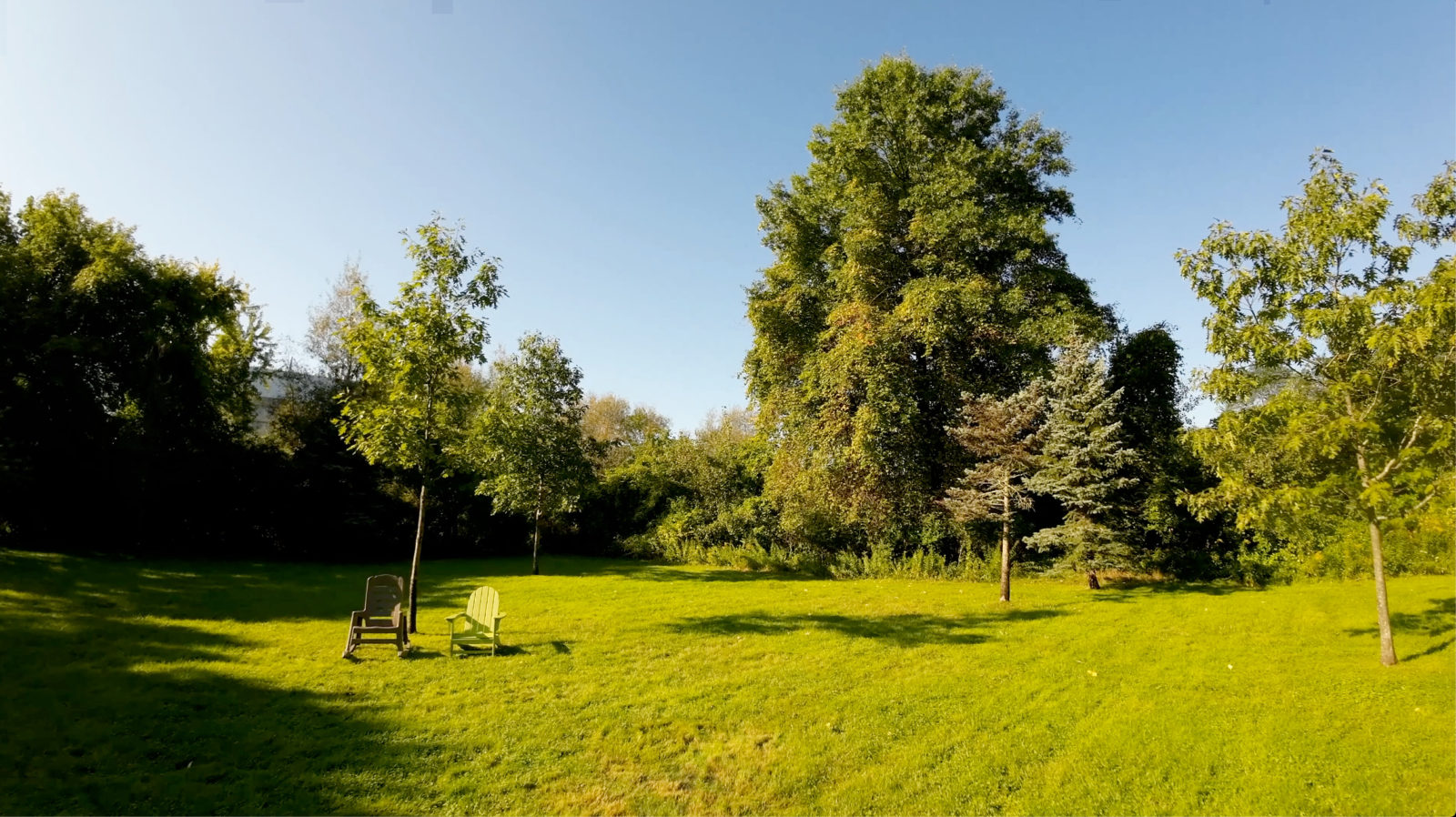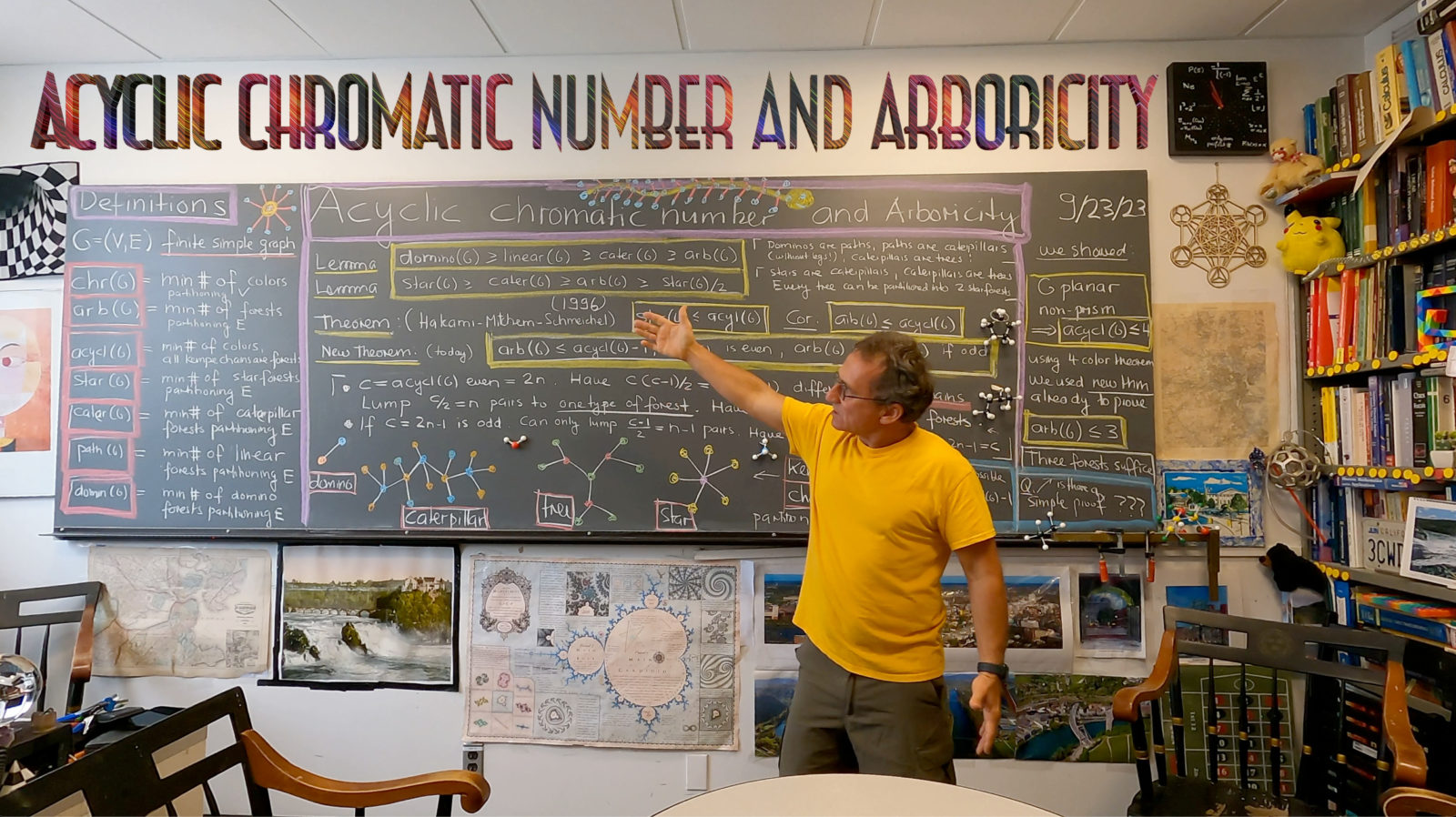We can prove a slightly improved version of a theorem of Hakimi Mitchem and Schmeichel from 1996 telling that the arboricity of a graph is bounded above by the acyclic chromatic number. The later is the minimal number of colors which are needed to color a graph in such a way that all Kempe chains are forests. We had used this relation between colorings and forests in the proof that the arboricity of a 2-sphere is 3. Relying on the 4-color theorem we had shown before that every 2-sphere different from a prism has acyclic chromatic number 4. This then leads to arboricity 3 because the 3 type of Kempe chains are all forests! The same argument works with larger chromatic numbers. But already for 3-spheres we do not know much about the acyclic chromatic number. The chromatic number is 8 or less for 3-spheres because we can cover its dual graph with 2 forests and then color the maximal simplices belonging to one of the trees with 4 colors (color a tetrahedron= maximal simplex with 4 color then move along the tree to color all the other facets). When does this produce an acyclic coloring?











